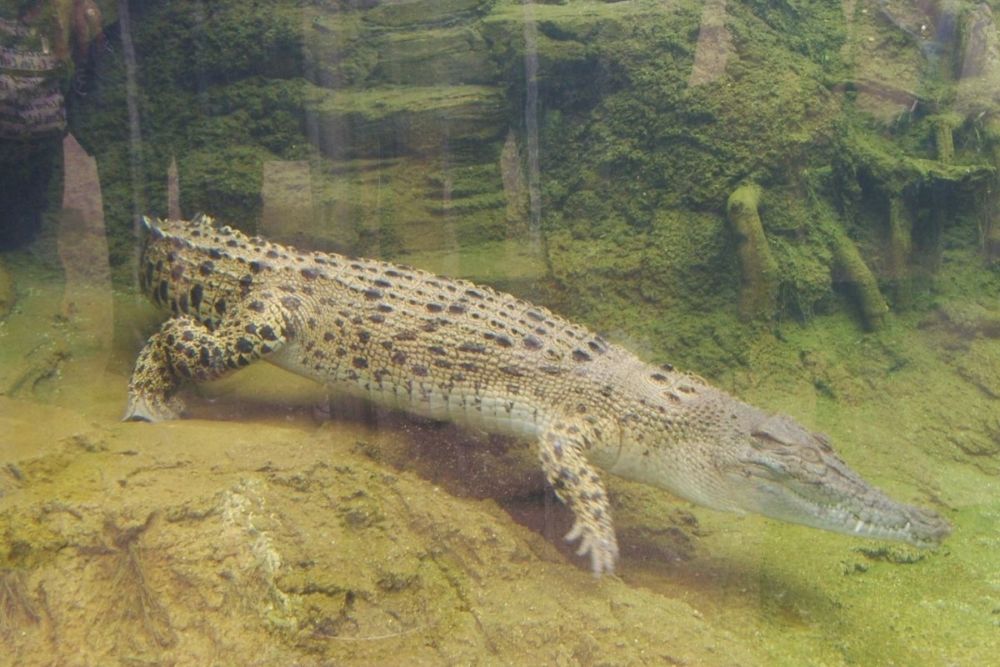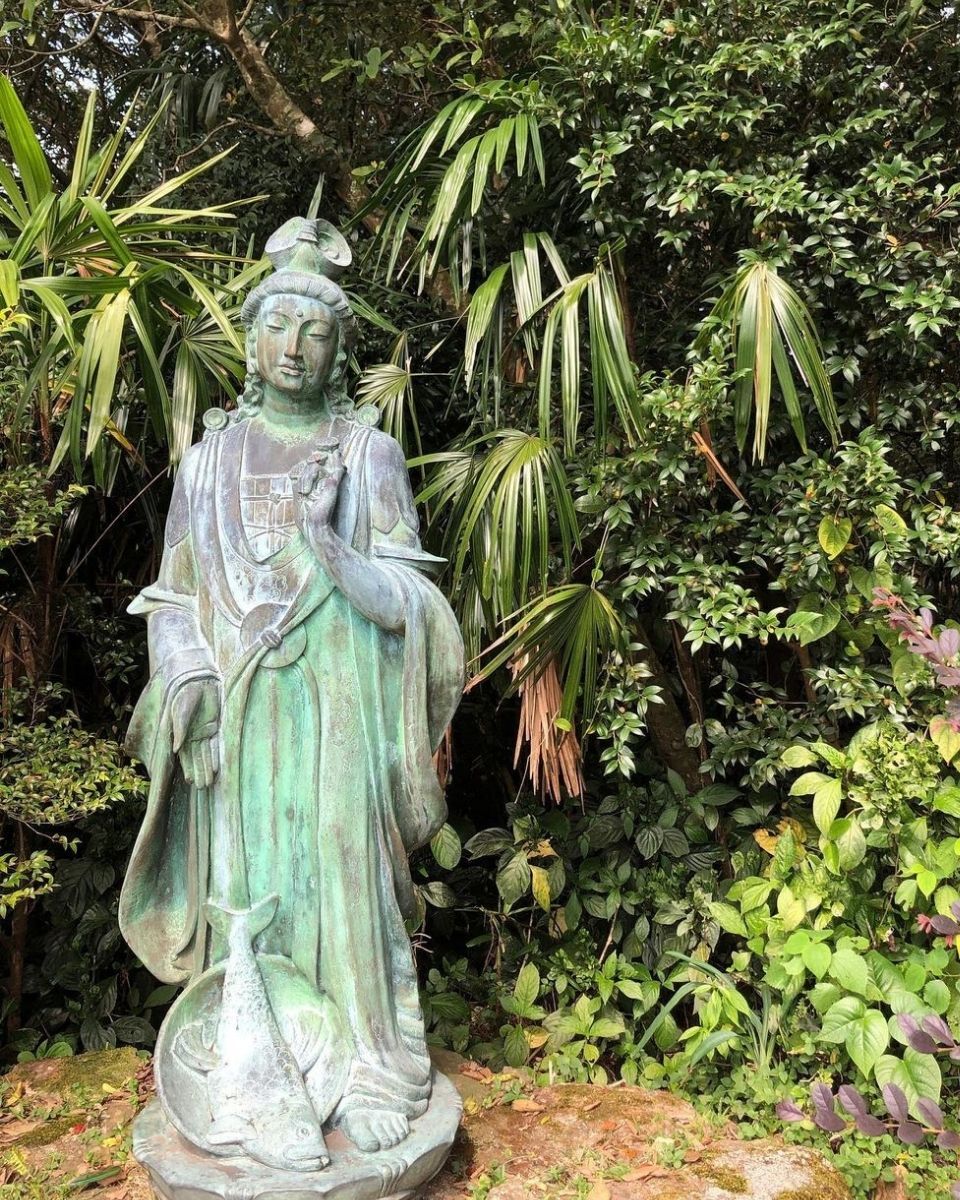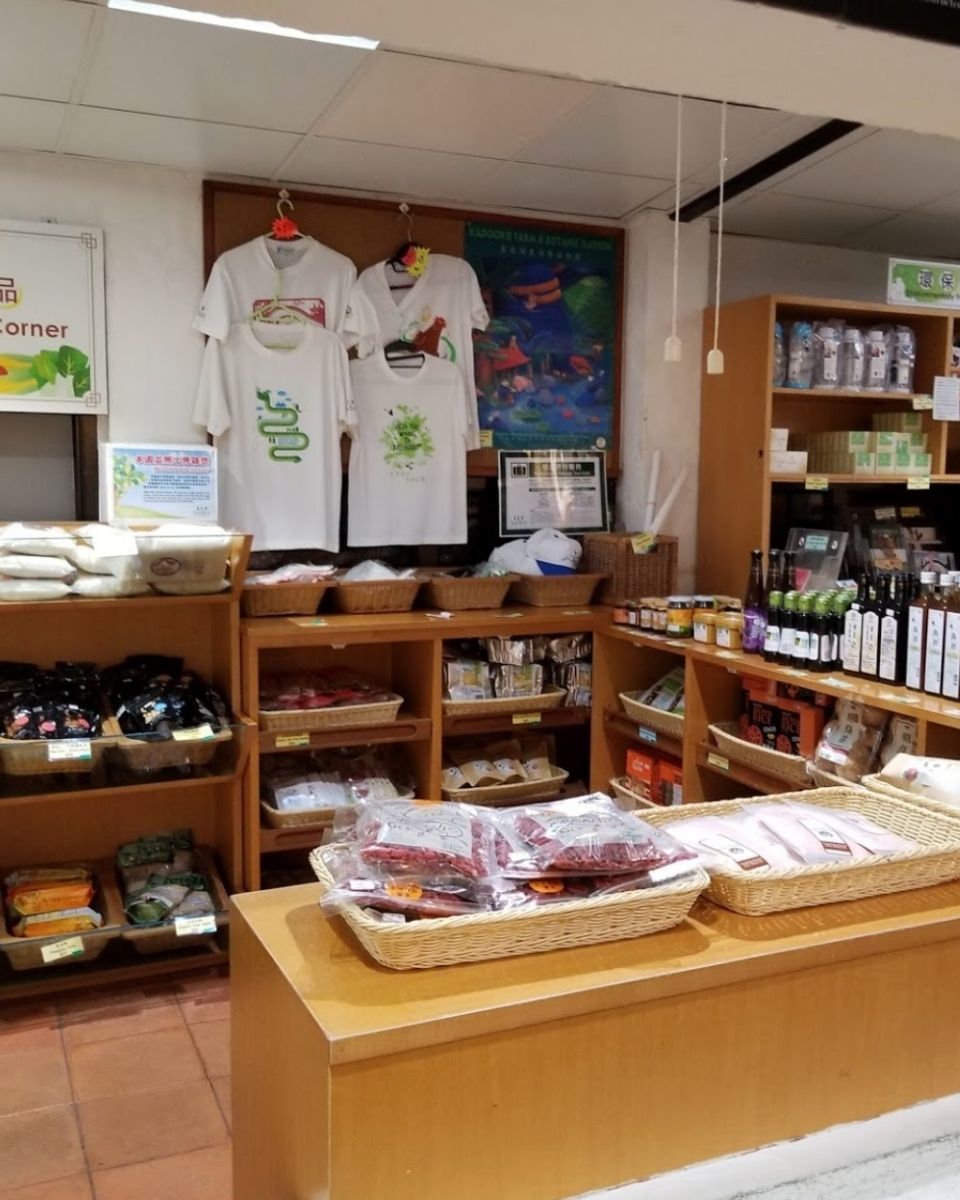By Localiiz
Branded | 17 May 2024
By Localiiz
Branded | 14 May 2024
By Localiiz
Branded | 27 March 2024
Copyright © 2024 LOCALIIZ | All rights reserved
Subscribe to our weekly newsletter to get our top stories delivered straight to your inbox.
Header image courtesy of Kadoorie Farm and Botanic Garden (via Facebook)
Known in full as Kadoorie Farm and Botanic Gardens (嘉道理農場暨植物園), this near-150-hectare segment of greenery is at once a conservatory, wildlife rescue centre, farm, and garden. Its location in central New Territories near Pak Ngau Shek, encircling Kwun Yum Shan, was laid out to encompass the swerves and curves of several naturally formed valleys, fully flowing streams, and lush woodlands. For an immersive glimpse at the gorgeous biodiversity that Hong Kong has to offer, here is our guide to making a trip to Kadoorie Farm most fruitful.


Showcasing a history that dates back to 1956, the farms were initially an experimental agriculture project established by the mercantile brothers—Lord Lawrence and Sir Horace Kadoorie. Initially, the two had set up the Kadoorie Agricultural Aid Association in 1951 to aid the poor in finding their own footing by providing them with training for indispensable farming skills, supplying agricultural assets, and offering cheap interest-free loans.
Legend has it that the sight of a lone tangerine tree on the slopes of Tai Mo Shan was the first seed of inspiration, planting the drive within Sir Horace Kadoorie to lay the grounds for his now-iconic farm. It was a solid piece of evidence that helped overturn the assumption of it being impossible for citrus to grow on Hong Kong’s hilltops.
A remarkable social initiative to “help people help themselves,” the farm was a centre that both researched and demonstrated optimised crop production and livestock breeding. Experimenters at the farm pioneered climate-specific plant and vegetation growing methods, and also bred pigs and chicken to adapt to the local ecology. Having gradually transformed to adopt conservatory projects, Kadoorie Farm earned a legislative stamp of approval in 1995 when it bolstered its positioning to become recognised as an educational space as well.
There is a main bus route towards Kadoorie Farm that passes through both the Tai Wo and Kam Sheung Road areas. It will drop you off right by the entrance.
There is an admission fee for all visitors except children under the age of five, senior citizens above the age of 60, and registered disabled individuals and groups. A ticket costs $15 for children between five to 11 years old, whilst tickets for people aged 12 to 59 cost $30. Eligible groups (of at least 20 members) such as whole-day school excursions or registered charities and government groups may enjoy a concession fee of $15 per person if a trip is booked four weeks in advance.

Here you will encounter eight kilometres worth of self-guided trails, themed viewpoints, heritage sights, environmental education stations, picnic spots, and a wide variety of animal exhibits, featuring well-loved celebrities like Pui Pui the crocodile and Bo Zi the masked palm civet.
Aside from administrating a variety of ecological programmes and sustainability projects, plenty of educational tours and workshops are offered to the public throughout the seasons. Aiming to provide a holistic perspective of the environment, Kadoorie Farm sets out to rekindle a harmonic connection between us and our ecosystem. As a rule of thumb, whenever interacting with or spending time around nature, please be reminded to take only photographs and leave only footprints.
Overseen by the Kadoorie Farm Fauna Conservation department, the animals on display have mostly been rescued and rehabilitated from dangerous situations in the wild. Though not open for public visitation, the in-house Wild Animal Rescue Centre is usually where they first wind up when discovered and saved. In operation since the 1990s, the centre serves as a hospital and recovery space, and has done a lot of important work to care for each and every animal on the farm.

Straddling a ridge atop Lam Tsuen valley, the Butterfly Garden is a paradise of over 240 species of butterflies and 2,000 species of moths. Occupying the midway point of the foothills to Kwun Yum Shan, the caterpillar-attracting leaves and nectareous flowers attract a large number of species to move in. Peak season is between April to June, and you may be lucky enough to see a multicoloured symphony of peacock pansy, white dragontail, and common jester species of butterflies.

Sir Horace Kadoorie was known to have a soft spot for parrots, an admiration encapsulated by his special request to set up the Parrot Sanctuary, serving as a reminder for people not to try and restrain these smart and beautiful birds. The parrots here are mostly strays and rescues that were previously kept as pets then abandoned.

Playing host to injured and recovering birds of prey, the Raptor Roost is a healing resort for unfortunate birds that have been abandoned, or that have encountered an accident. As most skyscrapers in Hong Kong use mirrored glass or similar materials, the birds sometimes mistakenly fly into the structures. Though rest assured that they are free to swoop and swerve to their heart’s content here.
You can also check out the Jim Ades Raptor Sanctuary, which includes a roster of owls, raptors, birds of prey like black kites, crested goshawks, common buzzards, and more. With a name to honour Major Jim Ades, founder of the first private bird of prey rehabilitation programme, the centre was completed in 1994 to facilitate rehabilitation, and has lent its aid to over 8,000 local birds since.

If you have been to the Shing Mun Reservoir, chances are you may have encountered playful macaque monkeys that hang around waiting to spook an unsuspecting child into dropping their ice cream. The cute macaques occupying Monkey Haven are ones that have been abandoned as illegal pets, and cannot function properly in the real wilderness anymore. Please refrain from feeding them as it will steer them away from being self-sufficient in the plentiful forests around them, and make them act a nuisance towards other visitors.
Established in honour of Sir Piers Jacobs, financial secretary of Hong Kong from 1981 to 1991, the Piers Jacobs Wildlife Sanctuary is a safe space for animals designed to emulate a naturalistic environment. Perhaps most notable is the resident “barking” muntjac deer, known for their peculiar call resembling a piercing manlike shriek. This particular group of deer act friendly towards humans, although it means they are unfortunately unfit to re-join the wild, making them permanent animal ambassadors at Kadoorie Farm.

Redirecting attention to an understandably popular attraction, the Native Mammal Display features a pair of snow leopard cat sisters named Chomel and Manis, as well as a cheeky-looking masked palm civet named Bo Zi. These mammals have been tragically expelled from their environments as a result of deforestation and unsustainable urban development.
As you walk amongst the foothills along the stream that cuts through the entire farm, you will notice the bubbling liveliness that flits about amongst the waters. The Streamlife Display provides an informational segmentation of the river into the upper, middle, and lower parts to showcase the diverse array of aquatic creatures inhabiting each section. Here you will learn more on local varieties of flying insects, fishes, newt, frogs, toads, and more. The exhibit also aims to alert visitors on keeping our natural waters clean by being more aware of our water waste and pollution.

The humble mule has always been a sturdy shoulder for us humans to rely on. Beloved Duffi is Kadoorie Farm’s very own transporter in chief. As an alternate to a motor vehicle, she has the special responsibility of helping to carry light cargo like compost, refuse, and tree saplings. Though sometimes she can be seen walking along routes on the mountain as part of her exercise regimen, the only way to pay her a visit at the stable is via a guided tour. More details can be found here.

A glimpse into the agricultural roots of Kadoorie Farm, this area is the home to a small gang of adorable pigs. They belong to a special breed known as Da Hua Bai (大花白), and are kept as tokens of past achievements in livestock husbandry facilitated by research at the farm, serving an educational role for all giddy onlookers. Though the area is shaded, the pigs will need to retreat indoors at around 11.30 am to 1.30 pm as the sunlight is too strong. With these highly intelligent and loveable pigs, the Kadoorie Fauna Conservation department hopes to inspire visitors to cut out, or at least lower, their meat consumption.

Scaly and leathery, reptiles are arguably not the most popular animal that visitors are dying to ogle at. Though they are not as loveable on sight as their mammal counterparts, these furless rascals need just as much love, respect, and care from us.
Up until the mid-2000s, the Reptile Lookout featured celebrity crocodile Pui Pui (貝貝), who has since moved to the Hong Kong Wetland Park. She was famed in the press for evading capture in the Shan Pui River in Yuen Long, where her case sparked the beginnings of dialogue in Hong Kong regarding wildlife conservation. The enclosure is still worth checking out for a glimpse of several reptilian species in their full glory.

The Reptile Garden, sandwiched between two ponds, features elongated tortoises and radiated tortoises. Enjoy the sight of them basking in the sunlight and roaming about carefree. Their slimier buddies and small counterparts can be found at the Amphibian and Reptile House. Drop by and say hello to the rare golden coin turtle and teeny tiny Romer’s tree frog.

The Sun Garden Animal Exhibit shows animals that has been rescued from the illegal wild animal trade. Poached and smuggled from their homelands as if they were products, tiny marmosets and precious tortoises—amongst other animals—have been cruelly traded as exotic pets, as a traditional Chinese medicinal ingredient, or even as a delicacy. Safely occupying the display, few of these animals eventually return to their habitats or become reintegrated into breeding programmes.
Wildlife Walkthrough encompasses the area of space on the other side of the stream to the Native Mammal Display. A mini zoo in itself, it showcases alligators, turtles, wild birds, and—notably the most popular animal to photograph at the attraction—pink flamingos. Mostly found in countries of tropical climates, these fluffy birds were gifted to Kadoorie Farm a long time ago, a few of them being over decades old.
The blend of flowers and plants is Kadoorie Farm is unique in the fact that it showcases a mixture of local as well as foreign species. Managed by the Flora Conservation department, there are different landscaping strategies that have been applied to different parts of the mountain, striking a balance between beautification and optimised conservation. It is worth keeping updated on the seasonal flowerings when you are planning your visit so that you can find the prettiest, most colourful blooms!

The Eco-garden and One-dou Farm is a self-contained, self-sufficient, and self-regulating plot of garden and crops. Employing only natural techniques that draw upon the inherent assets of the land, it shows that eco-gardening can parallel the effectiveness of industrialised agriculture. There are plenty of educational demonstrations showing organic growing methods that only require fertile soil, good seeds, and natural pest control—no additional chemicals to be found. Sustainable farming courses are sometimes held here, with more information available on the Kadoorie Farm site.

Though widespread, thick forests cover up a lot of Hong Kong, majority of the greenery we are exposed to these days is a secondary regrowth. Early human settlements and the bulldozing over of native woodlots for land development have been identified as major culprits. The Forest Restoration Site shows the efforts of the Kadoorie Farm team to regrow and repopulate in the area. Granted, the process is slowly unfolding, but changes are certainly evident, and make for exciting developments every time the seasons change.
From the first tangerine tree on the slopes of Tai Mo Shan, to the ripe orchards of today, fruit planting is a practice that has been intertwined with Kadoorie Farm throughout the years. Experimenting with agro-forestry methods, seeds of fruit trees are interleaved with native forest gardens, resulting in a series of low-maintenance crops that are on point for harvest all year round at the Fruit Forest.

The running stream and mossy boulders of the Walter Kerr Garden make for a perfect place to have a tranquil sit-down, where you let your worries melt away. Originally built as a pleasure garden, this small crop of flora stars a ceramic tiled Angled Bridge extended across a canopy of vines and swinging branches that flower fragrant yellow flowers during spring that turn to plush pods during the summer. Have a gander at the stepping stones and see how many little crawlies and wacky plants you can spot once you slow down to a near halt and refocus.
If you find yourself drawn to the beauty of magnolia flowers, head to the Magnolia Garden during the months between January to June. These gorgeous species are sadly endangered, with a large portion of magnolia strains being threatened by forest clearances and being over-picked for ornamental and medicinal purposes. As beautiful as they are, please keep your fingers to yourselves and just enjoy them with your eyes.

Many often forget that plants are living beings too. With the help of the root energy singing machine at the Plants and Us Greenhouse, we can bolster our connection to nature through listening to interesting melodies composed out of the electrical resistance currents naturally running throughout plant root cells. By interacting with the plant—adding water, touching it, stimulating it—we can alter the static energies it carries, creating new dynamics to bond both parties. The exhibit is made to enchant visitors into rethinking our relationships with nature.
There is also the simple yet alluring Cactus Greenhouse, which presents a whole spread of cactuses from a wide variety of shapes and sizes. Admire them with your eyes not your hands, your you may just prick your finger on one!
Named in honour of a local planter and fervent advocate of orchid conservation, the Gloria Barretto Orchid Sanctuary is a little area in the forest of Kadoorie Farm valley that features a walled garden shrouded in daintily intricate orchids. With some being native to Hong Kong, and some imported from the Indo-Burma areas, the variety of orchids on display show a distinctive beauty that is unparalleled during their bloom times of spring and early autumn.
There is also the Orchid Greenhouse, which provides visitors with a scientific introduction to these appealing orchids. Placards accompany each component of the exhibit, aiming to offer a quality understanding of an orchid’s ecology and ways we can help to reverse their oncoming extinction. You can browse through their impressive collection of flowering orchids that have been packed into the little glass room, absorbing their captivating splendour in every corner.
Inspired by a relic from Britain in the 1950s and 1960s, this giant signpost shows a stick of signs pointing in a whole bunch of different directions. Each point to a known world city, showing the distance between the specific checkpoint in the farm to the city in real life.

Overcoming the nine-kilometres of winding routes and eight-kilometres of tiny pathways will bring you to the breathtaking peak of Kwun Yum Shan Summit. Towering 550-metres over above sea level, you are granted a glimpse of the entire New Territories, stretching as far out as Shenzhen and Shekou on a bright day. A small statue of the goddess Kwun Yum occupies her post at the simple altar, radiating blessings of fertility and bountiful harvests, for the believers who seek her out. It has been her role on that peak for centuries, and she still draws in many visitors today.
Right beside the statue is a sign that points to the Hot Pots, an open outlet of cracks in the mountain’s surface that releases hot mists from the earth’s deep geothermal core. In the winter, the warmth swirls into the thickly moist air to create an illusion of smoke, which has been dubbed the “dragon’s breath” whenever it becomes visible.

Perched atop the hillside, this Chinese-style pavilion offers a beautiful archway to frame the picturesque Kwun Yum Shan. Built to commemorate the eponymous founders of the farm, the Kadoorie Brothers Memorial Pavilion is a viewpoint that bridges an appreciation of nature with an admiration for past stories.
The double roofs represent the close bond between the Kadoorie brothers, and a Chinese inscription is carved into the left side of the entrance to pay respects to their essence. Every December, a memorial race is held in honour of the brothers, whereby participants run to the pavilion viewpoint starting from the lower foothills.

These grand pillars were once the two hulking structures that flanked the doorway of the original building design of the General Post Office in Central. Set to be suffer a fate of demolition at the landfill, Sir Horace’s friend and war hero Y.C Liang decided to save these two decaled columns to gift to the Kadoories. From the platform, you can view the expanses of Kadoorie Farm and Lam Tsuen Valley.

Operated in association with farm partner New Life Psychiatric Rehabilitation Association, this quaint spot offers a little alfresco alcove for light refreshments. As a social enterprise, the café is run with the help of ex-mentally handicapped and differently-abled staff, and works to uphold the Kadoorie Farm value statements of spreading love and encouraging professional participation for all.
The eatery is right ahead from the stairway entrance of the farm from Lam Kam Road. Serving exclusively vegetarian food, you will find affordable delights like sandwiches and burgers (starting from $28), as well as hearty omelettes ($45) and soups ($45) to fuel your uphill climb. Or make up for the energy well spent from exploring the grounds by exciting your sweet tooth with ice cream ($34). As an added bonus, you may also load up on their organic baked goodies (starting from $14) to bring home!
Sun Garden Café, Kadoorie Farm, Lam Kam Road, Tai Po | (+852) 2488 9945

A mini-exhibit and shopfront rolled into one, the hillside Farm Shop makes for a pleasant pit stop complete with a bottle refill station full of purified water from the neighbouring streams. A quick gander at the open books, newspaper cut-outs, and informational tableaux on display will show you more about the history behind the farm. The building itself was once a pigsty, which explains the low white concrete dividers and tiny partitioning gates.
Browse around for fresh produce plucked straight from the farmyard and fruit trees around the area. Of course, the selection of items rotates around based on what crops are available or at their peak during the season, though the list usually includes eggs, vegetables, and herbs. Also available for browsing and buying are a collection of publications on eco-friendly living, as well as appliances geared towards sustainability.
Farm Museum and Farm Shop, Kadoorie Farm, Lam Kam Road, Tai Po


Top